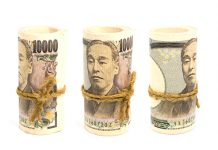Market movers today
Tackling the escalating COVID-19 crisis is a key focus in Europe. Ahead of her policy statement in front of the Bundestag tomorrow, German chancellor Angela Merkel will meet again today with state premiers to discuss possible new coronavirus restrictions, such as bar and restaurant closures. President Macron is also expected to announce stricter lockdown measures.
Early Thursday morning, Bank of Japan finishes a two-day policy meeting. We will likely see a cut in the BoJ’s new forecasts for GDP and inflation. We do not expect any changes to the QQE with yield curve control policy, though.
Please note the US Election Webinar 30 October 13:00-13:50 CET ‘Promising too much or too little? Budgetary and economic implications of Biden’s and Trump’s fiscal proposals’. For this webinar, we have invited Marc Goldwein, Senior Vice President and Senior Policy Director for the Committee for a Responsible Federal Budget (CRFB), to discuss the economic and budget implications both short and long term under the Donald Trump and Joe Biden administrations.
The 60 second overview
Challenge. Economists worldwide currently face the challenge of analysing economic data releases – both hard and soft indicators – that do not fully capture the latest rise in COVID-19 contaminations due to data lags. That said, so far it seems the global industrial sector is keeping up, partly due to a strong China, while the service sector struggles.
US macro. After a sharp increase in September, the Conference Board data showed a slight setback in US consumer confidence in October. The collection period comes prior to the recent worsening of US COVID-19 figures and could suggest a further dip in November. On a positive note, new orders of US core capital goods in September beat expectations reaching the highest level in six years. This is a positive signal for the business investment part of the national accounts. Also US durable goods order surprised positively, underpinning recent soft indicators that the manufacturing sector is recovering following COVID-19 induced supply chain distortions, a run-down of inventories and low consumer demand.
Equities. The latest sessions have seen a clear outperformance of growth relative to value, which has suffered from renewed lockdown measures and a flattening yield curve (banks). In yesterday’s session Russel 3000 tech was up almost 1%, while Russel 3000 value was down 1.3%. This sector rotation also explains the huge underperformance of Europe relative to the US. The news flow overnight has been very modest and US equity futures are modestly in ‘red’ this morning.
FI. Global yields continue to decline on the back of rising infections and more lock-downs as well as the lack of fiscal stimulus from the US. Hence, the demand for safe assets such as Bunds and Treasuries is rising. Given the ECB QE, the periphery is matching the move seen in core-EU. Furthermore, we are still seeing issuers taking advantage of the very positive net cash flow in the European government bond market. That said, we still believe that the trading range for Bunds is -40bp to -60bp as this is the last week with significant positive net cash flow for some time.
FX. In line with yesterday’s rotation in to FAANG, tech and software (found in the US) and out of value sectors such as banks, autos and industrials (found in Europe), we also saw EUR/USD snap slightly lower by some 50bp in late US hours to now high 1.17s. Strength in SEK and NOK continues to be somewhat puzzling.
Credit. Although CDS indices continue to widen, with iTraxx Xover and Main 3bp and 1bp wider, respectively, cash bonds remain more resilient so far, with a small grind tighter in IG cash and only marginal widening in HY cash.
Nordic macro and markets
In Denmark, there was a political agreement last night to increase support measures for COVID-19 affected businesses by an expected DKK5bn (0.2% of GDP) in 2020 and DKK3bn in 2021. This will not significantly change the government’s borrowing requirement. The agreement also reopens a borrowing option for SMEs, which could mean that the government will lend out DKK28bn but in reality the figure will be much lower. The last time the window was open, the lending was DKK7bn. The new measures come as new restrictions are hurting some industries such as restaurants.
In Sweden, September retail sales and NIER’s October economic tendency survey are due for release. Retail sales have performed relatively well throughout the pandemic. During August, however, a small correction of sales volumes was seen, but this after sales volumes had risen for three consecutive months. We expect retail sales to increase but at a slower pace than seen during May-July. The risk here is that people are getting more nervous about being infected and act accordingly. Regarding NIER, confidence in both retail trade and the manufacturing industry has risen to levels above the historical average, while private services are still lagging, nonetheless the rise in the past couple of months. COVID-19-hit consumer-related services continue to be weighed down, which was confirmed by the Riksbank’s business survey published last week. However, the virus situation remains uncertain, which probably will limit the upside near term.
Also in Norway, we get monthly retail sales data for September. There are signs that consumer spending dropped further after the fall in August, but we see this mainly as a correction after the surge over the three previous months. New travel restrictions and the closed border with Sweden triggered a fresh jump in retail sales in July and a sharp correction in the monthly data was inevitable as these effects normalise. Retail sales were still 8% higher in August than they were in February before the pandemic struck, which suggests that the decrease was not down to growing fears and reduced mobility. We expect a drop of 0.7% m/m in September.













